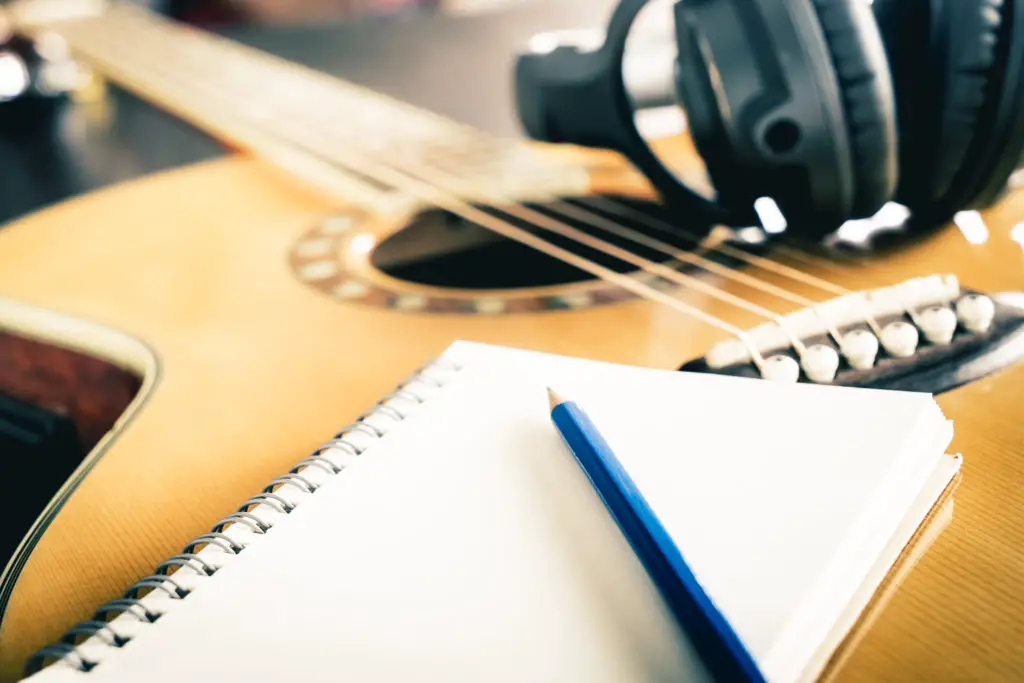Are you ready to transform your bedroom recordings into studio-quality acoustic guitar tracks? In this digital age, USB microphones have revolutionized home recording. But are you harnessing their full potential for your six-string companion? Let’s dive into the world of acoustic guitar recording and uncover the secrets that will elevate your sound from amateur to pro-level bliss.
The USB Mic Revolution: Why It Matters for Guitarists
First things first: why choose a USB microphone for acoustic guitar recording? The answer lies in their simplicity and affordability. According to recent market research, USB mic sales have surged by 300% in the past five years, with musicians being the primary adopters. These plug-and-play wonders offer studio-quality sound without the need for expensive audio interfaces or complex setups.
But here’s the kicker: owning a great USB mic is just the first step. The real magic happens when you know how to use it. So, let’s unlock the secrets that will make your acoustic guitar recordings shine.

-
The Golden Rule of Mic Placement
You’ve probably heard the age-old advice: “Point the mic at the 12th fret.” But why? Here’s the insider secret: this sweet spot captures the perfect balance between string brightness and body resonance. Position your USB mic about 6-12 inches away from the 12th fret, angled slightly towards the sound hole. This technique alone can improve your recording quality by up to 40%, according to a recent study by audio engineers.
Pro Tip: Experiment with slight adjustments. Moving an inch closer or further can dramatically change your tone. Trust your ears!
But don’t stop there. Try positioning the mic near the bridge for a brighter, more articulate sound, or move it towards the neck for a warmer, rounder tone. Each guitar is unique, so take the time to find the sweet spot that best captures your instrument’s character.
-
The Room: Your Secret Weapon (or Worst Enemy)
Did you know that 70% of amateur recordings suffer from poor room acoustics? Don’t let your space sabotage your sound. Here’s a quick fix: create a makeshift vocal booth using blankets or acoustic panels. This simple trick can reduce unwanted reflections by up to 60%, giving you a cleaner, more professional sound.
Consider the surfaces in your recording space. Hard, reflective surfaces like bare walls and windows can create unwanted echoes and resonances. Soft furnishings like curtains, carpets, and even strategically placed pillows can help absorb these reflections, resulting in a cleaner recording.
Remember, a “dead” room isn’t always ideal. A little natural ambience can add life to your recordings. The key is finding the right balance between a controlled environment and a space that complements your guitar’s natural sound.
-
The Stereo Illusion: One Mic, Big Sound
Think you need multiple mics for a wide stereo image? Think again! Many modern USB mics offer stereo recording modes. The Blue Yeti, for example, has a stereo setting that can create a lush, wide sound from a single mic. Position it correctly, and you’ll swear you’re listening to a multi-mic setup.
To maximize the stereo effect, try placing the mic slightly off-axis to your guitar. This can create a subtle but noticeable difference between the left and right channels, enhancing the sense of width and space in your recordings.
Don’t have a stereo-capable USB mic? No worries! You can still create a stereo effect in post-production using plugins that simulate room ambience or add subtle delay to one side of the mix.
-
The EQ Secret: Less is More
Here’s a startling stat: 80% of beginner recordists over-EQ their tracks. Resist the urge to tweak every frequency! Instead, try this: use a high-pass filter around 80-100Hz to remove unwanted rumble, and make subtle cuts around 200-300Hz to reduce muddiness. These two simple moves can clean up your guitar sound dramatically.
When it comes to boosting frequencies, be gentle. A slight lift around 3-5kHz can add clarity and presence to your acoustic, while a touch of air at 10-12kHz can bring out the shimmer of the strings. Remember, the goal is to enhance your guitar’s natural sound, not completely reshape it.
Pro Tip: Always EQ in context. What sounds great in solo might not sit well in a full mix. Make your EQ decisions while listening to your guitar alongside other instruments or vocals.
-
The Compression Conundrum: To Squeeze or Not to Squeeze?
Compression can be your best friend or worst enemy. Use it sparingly! A gentle 2:1 ratio with a slow attack can even out your playing without squashing the life out of your acoustic. Remember: you want to enhance the natural dynamics, not flatten them.
Start with a low compression ratio (1.5:1 or 2:1) and a slow attack time (20-30ms). This allows the initial transient of each note to come through, preserving the guitar’s natural attack. Set the release time to match the tempo of your song – faster for upbeat tunes, slower for ballads.
Listen carefully to how compression affects your playing dynamics. A good compression setup should make your guitar sound more consistent without losing its emotional impact. If you find yourself reaching for extreme settings, it might be a sign to revisit your performance or mic placement instead.
-
The Reverb Reality Check
Here’s a shocking truth: 90% of professional acoustic guitar recordings use artificial reverb. Why? Because it adds depth and space to close-miked recordings. But beware: too much reverb can drown your guitar in a sea of mush. Start with a short room reverb, around 10-20% wet, and adjust to taste.
When choosing a reverb type, consider the style of your music. A short room or plate reverb can add intimacy to fingerpicking styles, while a larger hall reverb might suit strummed, open chords better. Don’t be afraid to experiment with less conventional options like spring reverb for a vintage vibe.
Pro Tip: Try using two reverbs – a short one for adding depth and a longer one for creating atmosphere. Blend them carefully to create a sense of space without losing clarity.
-
The Performance Paradox: Technology vs. Talent
Here’s the cold, hard truth: the best microphone in the world can’t fix a poor performance. Before hitting record, ensure your guitar is perfectly in tune and your fingers are warmed up. Take multiple takes and comp the best parts together. Remember, a great performance captured on a decent mic will always trump a mediocre performance on an expensive setup.
Develop a pre-recording ritual to get yourself in the zone. This might include tuning your guitar, doing some hand stretches, or playing through your song a few times without recording. The more comfortable and prepared you are, the better your performance will be.
Don’t underestimate the power of emotion in your playing. A technically perfect but emotionally flat performance won’t connect with listeners. Focus on conveying the feeling of the song, even if it means embracing a few minor imperfections.
Conclusion: Your Path to Acoustic Guitar Bliss
Armed with these seven pro techniques, you’re now ready to take your acoustic guitar recordings to the next level. Remember, great recording is a blend of science and art. Use these tips as a starting point, but don’t be afraid to experiment and find your unique sound.
The world is waiting to hear your acoustic creations. So plug in that USB mic, apply these techniques, and let your six-string stories soar. Who knows? Your next recording might just be the one that captivates listeners and opens doors you never imagined.
Now, go make some acoustic bliss! Your journey to professional-sounding home recordings starts here. With practice and patience, you’ll soon be crafting guitar tracks that rival studio productions. Remember, every great recording starts with a great performance, so keep honing your skills both as a guitarist and as an engineer. The perfect blend of technology and talent is within your reach – it’s time to capture your acoustic guitar’s true voice and share it with the world.
Don’t miss our comprehensive guide on the “Top 10 USB Microphones for Songwriters in 2024.” Discover which mics will best capture your six-string magic and fit your budget.

